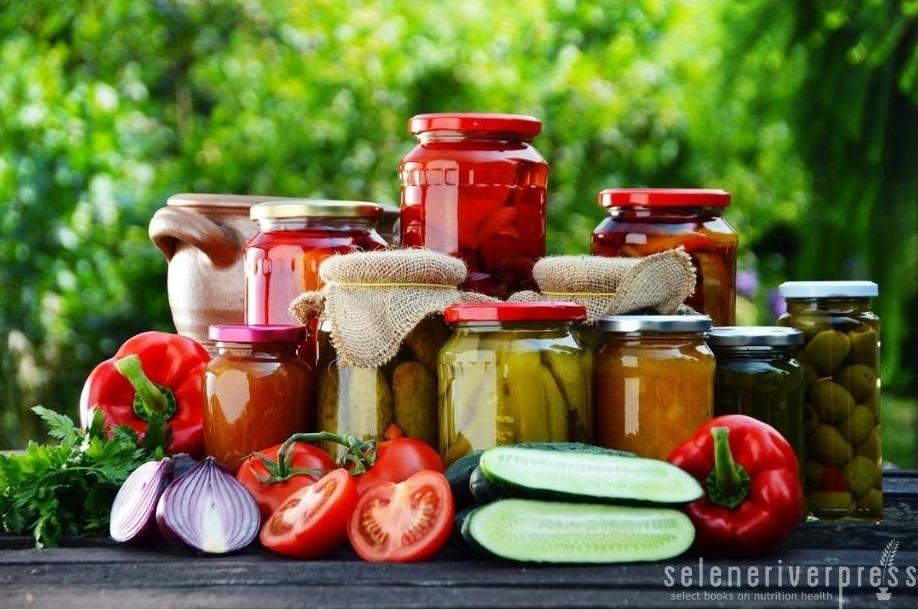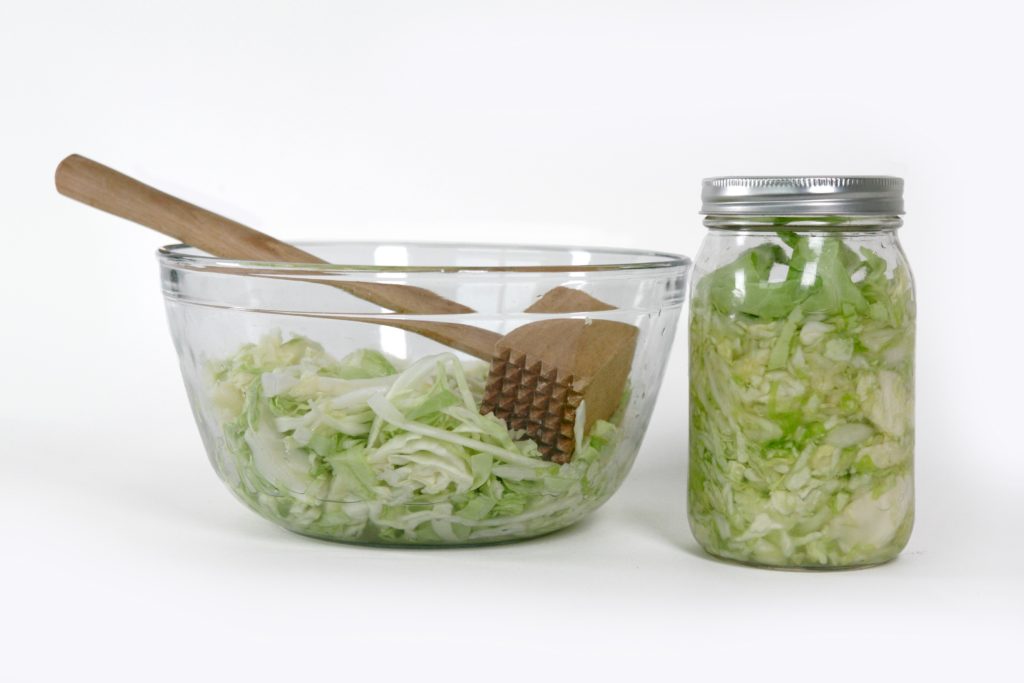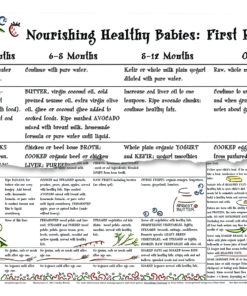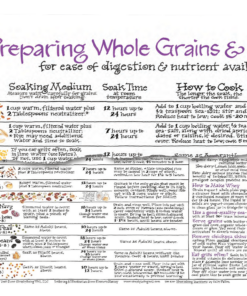Fermentation and canning are both traditional methods of preserving food, but there are important differences to consider.
It’s summertime, folks, and our gardens are producing a bounty of vegetables! But what to do with the surplus of tomatoes, zucchini, string beans, radishes, cabbage, and all the other gorgeous produce that remains after cooking, eating, baking, and sharing as much as you are able? And how should you preserve them so you can enjoy their homegrown goodness later? Fermenting or canning? Which is the best, and why? To determine the answer, let’s look first at the differences between these preservation methods.
The most significant difference between canned food and lacto-fermented food is shelf-life. I call this the determining factor because, nutritionally, lacto-fermentation wins over canning every time. Read on to learn why.
Canning Pros and Cons
If you need to keep vegetables for several months or years, canning is your best bet. This is also true if you have too much food to consume within a couple of months. Why? Canning makes food shelf stable, meaning it can be stored at room temperature for a long time. Under the right conditions—consistent room temperature and a tight seal—canned foods will last a lifetime. This is because the high heat of canning destroys anything in the food that would allow it to support microbial life within certain parameters of time and temperature—the definition of a “potentially hazardous food,” according to the FDA.
However, canning kills all microbes, which includes beneficial microbes. It also destroys enzymes and depletes the amount of vitamins—including important vitamins such as C, B1, and B2—by 30 to 50 percent. What’s more, the vitamin depletion in canned foods will continue as the years go by. Hmmm. If it seems we lose a lot in our quest for shelf life, that’s because we do. So next time you stroll down the canned food aisle at the grocery story, just think about all that “dead food” on the shelves.
Lacto-Fermentation Pros and Cons
Fermentation is a value-added process. In other words, you get more out than you put in. Fermentation not only preserves what vitamins and enzymes are in the food, but it also increases the amount of vitamins in the food and produces additional B vitamins. Fermentation even grows the beneficial bacteria that is oh-so-good for your microbiome and overall health. (These days, who doesn’t need more beneficial microbes?)
The only drawbacks to lacto-fermentation as a food preservation method is that it will not last for years as canned foods do, and you cannot store it on a shelf at room temperature. Lacto-ferments must be refrigerated or stored in a cool place such as a root cellar, basement, or wine cellar where the temperature is consistently around 40°F (4.5°C).
How long lacto-fermented vegetables and fruits last depends on their sugar content. The higher the sugar, the shorter the shelf life (think berries). The lower the sugar, the longer the shelf life (think cabbage). Berries and other high-sugar fruit are best consumed within two to four weeks after fermenting. Low-sugar fruit (such as cucumbers and tomatoes) or vegetables (such as cabbage), can last from six months to two years or more.
In fact, for those who are sensitive to histamines, it is best to ferment kraut for a year or more. As it continues to ferment, albeit slowly, in your refrigerator, the histamine in it will decrease significantly over time.
To sum up, when it comes to traditional methods of preserving foods, lacto-fermentation is clearly the most nutritious process. However, if you have a surplus and need to store it for a long period of time, go ahead and can it.
The good news? Canned, dead food (“dead” in terms of enzymes and beneficial bacteria) can be brought back to life by lacto-fermentation. True! Just add some salt and whey or starter, and ferment. You will have its nutritional benefits in no time.
For more information about canning and lacto-fermentation methods, see the lacto-fermentation section my book, The Complete Cooking Techniques for the GAPS Diet (pp. 121–124 and 125–143).
Image from iStock/monticelllo (main), post image from Sandrine Perez.





